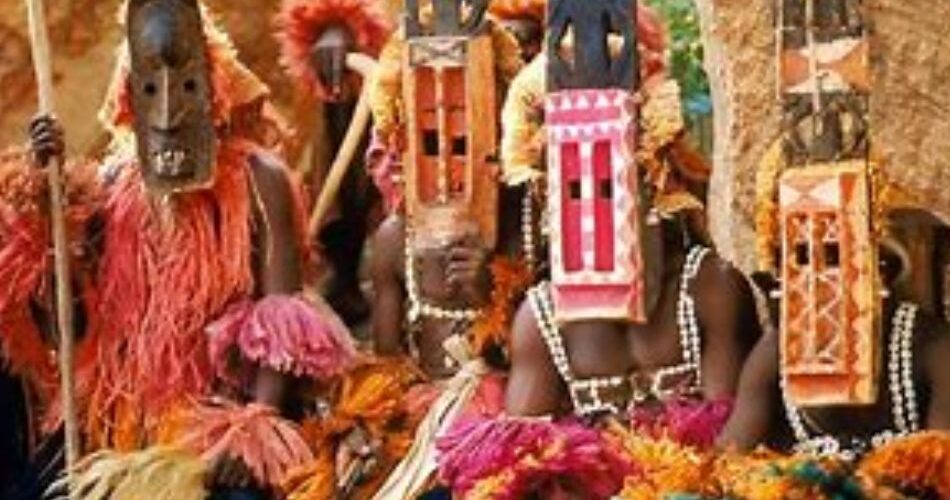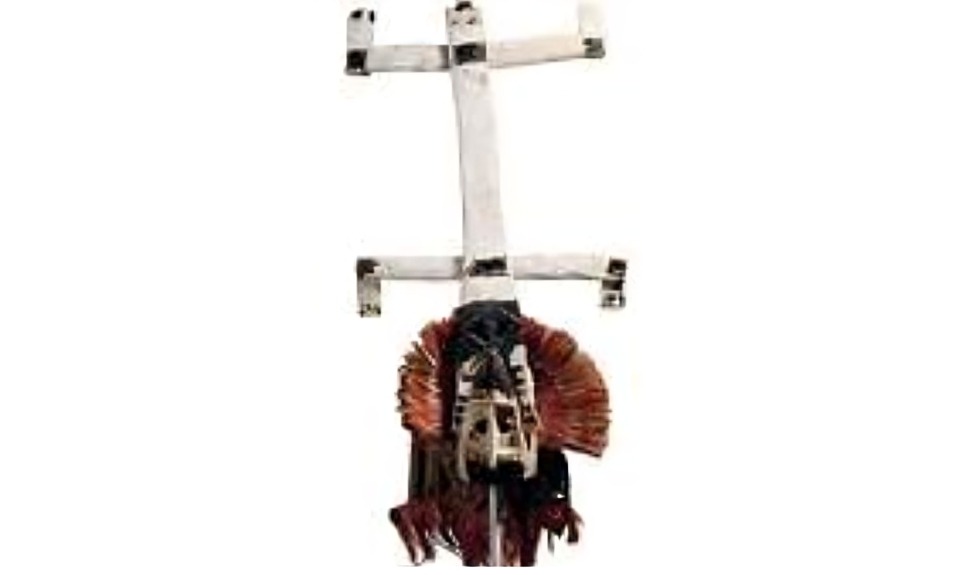The Famous Cliff Dwellers: The Mystery of the Dogon People of Mali

In the heart of Mali, where the unforgiving embrace of the Sahara meets the verdant whispers of the savanna, lies a community as unique as the landscape they inhabit. The Dogon people, shrouded in an aura of mystery for centuries, are renowned for their cliff dwellings, intricate masks, spiritual beliefs, and rich cultural heritage. This West African tribe has captured the imagination of scholars, anthropologists, and tourists alike, with their complex cosmology and striking architecture.
In this immersive journey, we explore the captivating world of the Dogon people, unraveling the secrets of their cliff dwellings, exploring their intricate cosmology, and celebrating their enduring legacy.

History and Origin
The origin of the Dogon people sparks debate. Some say they’re descendants of Egyptians in Libya, later migrating to Mali. Most agree they settled near the Bandiagara Escarpment in southwest Mali, a 150-mile sandstone cliff.
Today, about 250,000 Dogon live in this region, with their dwellings constructed along the base of the escarpment for protection from slave traders, warriors seeking their conversion to Islam, and other threats.
The Mystery of the Dogon People: The Enigmatic Cliff Dwellings of the Dogon
The most striking facet of Dogon culture is undoubtedly their cliff dwellings. Imagine a world where your home isn’t built on solid ground but clings defiantly to the face of a 500-meter precipice. This is the reality for the Dogon. Their villages, constructed from banco (mud mixed with straw), blend seamlessly with the sandstone cliffs, creating an almost organic tapestry.
The iconic multi-story structures, known as togu na, are more than just dwellings; they are a physical manifestation of the Dogon belief system. The flat roofs symbolize the sky, the square base represents the earth, and the granaries, often circular with conical thatched roofs, embody the female principle.

The Dogon people confidently developed a method using rope ladders and scaffolding to construct their impressive towering residences. Unique Culture and Traditions.
The Dogon excel in fostering strong family connections that form the foundation of their society, with each individual being an integral part of a ‘lubo,’ a family unit. Villages are not only collections of houses, but lively communal areas frequently used for farming, hunting, and rituals. The music of life in a Dogon village is the rhythmic blending of the villagers, reflecting time-tested collaboration.

The Dogon culture is known for many features. The most important is their complex cosmology. It includes astronomy, mythology, and religion. According to Dogon cosmology, the Nommo are their spiritual ancestors. They emerged from the star system of Sirius.
However, the critics state that the Dogon knew about the astronomical facts from the external influences, but supporters say that the claims of the ancient astronomical observations may be correct. There stands the mystery of how a pre-modern society could hold such intricate data about celestial bodies. This question baffles scholars and researchers who are trying to make sense of the Mayan culture.
Unraveling the Mysteries of Dogon Cosmology
The essence of Dogon culture lies in their intricate universe-life cosmic doctrine, which comprises a range of myths, symbols, and rituals. At its core, Dogon cosmology focuses on a belief in a Supreme Being who created the universe and brought forth the mythological first beings called Nommo. These Nommo beings then journeyed to Earth, imparting wisdom and ethics to its inhabitants through the Dogon people via Sirius. The unfathomable vision of the cosmos is manifested in the detailed artworks, symbols, and rituals that hold significance in the heart of Dogon existence.
Masks: Where Spirits Dance and Stories Come Alive
Masks are not just a cultural artifact for the Dogon; they are a bridge between the visible and invisible realms. Known as “inima,” these masks are believed to embody spirits and ancestral forces. Carved from wood, each mask is unique, representing a specific deity, ancestor, or natural phenomenon.

During ceremonies, dancers, often young men, wear these masks, becoming conduits for the spirits they represent. The rhythmic stomping, chanting, and vibrant costumes create a mesmerizing spectacle, a tapestry woven from movement, music, and the power of belief.
A Multitude of Masks, a Multitude of Meanings
There are over 80 different types of Dogon masks, each with a distinct purpose and symbolism. Here are a few examples:
Kanaga: A horned mask representing the powerful creator god, Amma.

Sigui so: A graceful female mask symbolizing beauty, fertility, and the life force (nyama).
Awa: A masked figure associated with death and the ancestral world.

The Dogon believe that the power of the masks lies not just in their form, but also in their creation process. The carvers are considered intermediaries between the physical and spiritual worlds. They follow specific rituals and prayers during the carving, infusing the masks with powerful spiritual energy.
Sacred Ceremonies and Rituals: The Mystery of the Dogon People

The Dogon people observe various religious ceremonies and rituals year-round. These events mark the passage of time, respect nature’s rhythm, and honor ancestors. One significant ceremony is the Dama festival. It spans two days and involves honoring departed souls, aiding them in their journey to the afterlife. The Sigui ceremony, occurring once every sixty years, focuses on Dogon myths and cosmological perspectives. These practices are not solely religious but also facilitate communal bonds, cultural expression, and the transmission of ancestral wisdom across generations.
Challenges and Preservation Efforts
Despite their enduring cultural heritage, the Dogon people face numerous challenges in the modern era. From environmental degradation and climate change to the encroachment of globalization and modernization, the traditional way of life of the Dogon is increasingly under threat. Efforts to preserve and revitalize Dogon culture include cultural education programs, heritage tourism initiatives, and community-based conservation projects. By promoting Dogon culture and backing sustainable projects, we can keep their legacy alive for future generations.
Conclusion:
At the culmination of this journey through the mystical realm of the Dogon people, we are once again reminded of the enduring power of culture, faith, and community. Despite residing in a small enclave on the cliffs, they exemplify the intricate and unique nature of numerous African cultures. As time passes, guilt fades, symbolizing the challenges, victories, and resilience of the ancient Dogon community on the Bandiagara Escarpment. We uncover not just a populace, but a way of life embodying the spirit of Africa. Through the Dogon, we explore a realm where ancient customs meet modernity, offering insights beyond Mali’s borders.










